There would be Bram Stoker's "Dracula" without legends from our part of Europe. It was in them that the author of the novel found vampires and ways to fight them. Or maybe even a prototype of a wealthy magnate who turned into a phantom after his death?
The literary Count Dracula claims that he is a Sekler by origin and a descendant of Attila, the leader of the Huns. The author of the novel, Irish writer Bram Stoker, probably hoped that the Hunic roots of the Transylvanian phantom would add to the character of horror and mystery. However, the man he had nicknamed the vampire - Dracula - had a different origin. This is the Wallachian hospodar Vlad III the Impaler, from the local Basarab dynasty.
Interestingly , his grandmother was probably Ryngałła Anna, the cousin of Władysław Jagiełło and widow of the Mazovian prince Henryk. Vlad was in a way "our man" - also because of common political interests. Together with the rulers of the Polish-Lithuanian state, his family promised to defend Christian Europe against Muslim Turkey, as evidenced by their membership of the elite Order of the Dragon.
Dracula's father served Władysław Warneńczyk with his advice and troops before the unfortunate Battle of Varna, and the older brother - Mircza - took part in it.
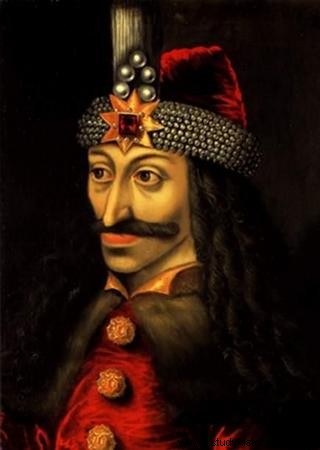
Vlad III the Impaler. Widely considered the prototype of Dracula. But is it really right?
In Romania, this historic Dracula is a national hero. No one, apart from the political enemies of the time, linked him there with devilish powers, though he undoubtedly ruled bloodily and brutally. In the West, when Stoker published "Dracula" in 1897, the Wallachian hospodar was virtually unknown. Only professionals have heard of him. The stoker was not. He did have a good friend though.
Mysterious Professor Vambery
According to the writer's biographers, he heard about Dracula probably thanks to Ármin Vámbéry - a traveler and turkologist from a Jewish family in Slovakia . He had the reputation of an erudite, a polyglot (who knew many Slavic languages, among others), and also ... a British spy working to the detriment of Russia.
Let us add that Vambery knew a bit about Poland and he was familiar with Henryk Sienkiewicz. He even spoke about the expropriation of Poles in Greater Poland by the Germans. In a letter to Sienkiewicz, he called it "barbarism" and "rape". He consoled that the German efforts would be counterproductive:“The Polish nation does not collapse - the stronger the pressure from outside, the greater the resistance and strength from within. The noble fire of freedom and independence can never be harmed by the spirits of darkness ”.
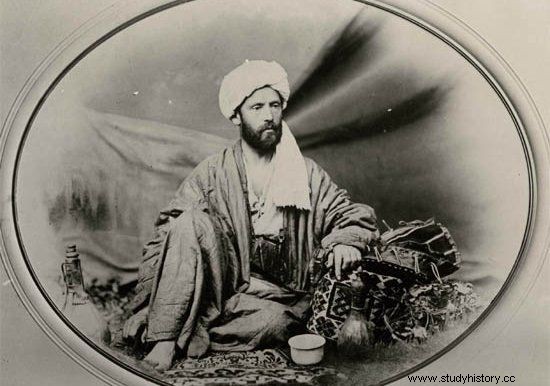
Ármin Vámbéry was a world-famous orientalist and a friend of Bram Stoker. Many say that it was from him that the Irish writer heard the story that inspired him to write "Dracula".
Did Vámbéry talk to Stoker about slightly different ghosts of darkness? The writer's biographers believe so, although the notes left by the author do not provide similar certainty. Well, they don't even say such basic things as how Stoker found out about the historical Dracula! Vámbéry - a traveler and erudite - seems to be the most obvious source, however.
Bloody legends of Slovakia
Was Vámbéry interested in vampires? Before "Dracula" was written, other dark novels about bloodsuckers, less known today, were printed for several decades. And since the eighteenth century, the West was flooded with rumors about ghouls marauding in eastern Europe - mainly in areas with people of Slavic origin. Vámbéry came from Slovakia. Moreover, was born and raised some hundred kilometers from the residence of the famous vampire woman - "blood countess of Čachtice" Elizabeth Bathory. How would he not know about it?
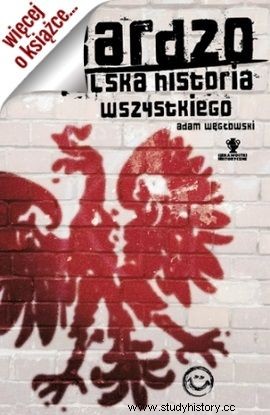
You will learn even more about Polish traces in the history of Dracula by reading Adam Węgłowski's book. "A very Polish history of everything" (Znak Horyzont 2015).
It is possible that the scientist from Slovakia became interested in the subject also because of his… surname. Does it not resemble the term "vampire" from the southern Slavic region or the Polish, archaic "wąpierz"?
There are proper names with a similar etymology, and even surnames (in Poland, for example, the name Wąpiersk and the surname Wąpierski, respectively). They could have been a kind of "memento" of chilling legends or gossip from centuries ago. Even if the origin of Vámbéry's surname was different, a scholar who knew the Slavic languages could notice this similarity and study it.
Assuming that Vámbéry was broadening his knowledge of the wraiths of Eastern Europe, could also provide Stoker with information about Pastor Helwing - the probable prototype of the vampire hunter Van Helsing from "Dracula ". I write more about this connection in the book "Very Polish history of everything".
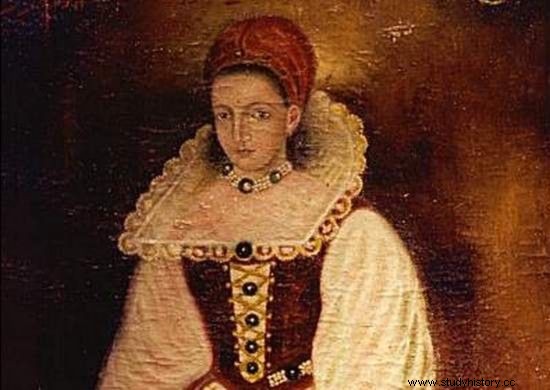
Ármin Vámbéry was born only 100 kilometers from the castle of the "blood countess of Čachtice" Elizabeth Bathory. He probably knew the legend according to which the countess was supposed to be a vampire very well.
Dunin like Dracula
In historical accounts of alleged vampires from Eastern Europe, bloodsuckers are usually risen from the grave, unfortunate villagers. The vampire-aristocrat, so common in horrors and folk tales, is a sensation. The exception is Countess Batory (by the way, the niece of the Polish king Stefan Batory, a native of Transylvania, i.e. Transylvania, the homeland of the book Dracula).
Stoker must have known about her, for centuries she had been infamous. Except was a woman and he needed a man bloodsucker . Who knows, if he did not hear the legend of a rich vampire from a family once famous throughout the Republic of Poland ...
Vámbéry could have been the source of the information again - especially if he knew Helwing's research from the 18th century and if he followed ethnographic publications from the 19th century. Helwing's works, although focused on reports from Masuria, also contained information about "vampires" from other areas, incl. from Ukraine. Ethnographic publications described the legend of the aforementioned Polish ghost.
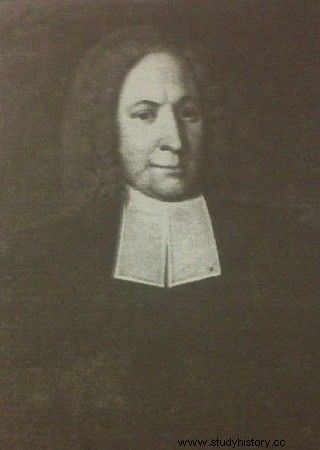
Pastor Jerzy Andrzej Helwing himself.
Bazyli Dunin-Borkowski, because we are talking about him, was the son of a colonel in the Polish army. King Władysław IV Waza gave his father a fortune near Czernihow for his services during the fights for Smolensk. Yes, the Dunin family, whose ancestors included, among others, medieval magnates, gained a Ukrainian branch. Bazyli lived at a time when the Cossacks dreamed of greater independence, and Poland and Russia competed for Ukraine. His relatives died during the Chmielnicki Uprising. After the Andruszów Armistice (1667), Chernihiv and its vicinity were on the Russian side. Dunin-Borkowski was making a career and money alongside Hetman Ivan Mazepa (who allegedly bought this position from the Russians, but with money borrowed from Bazyli).
Vampire from Ukraine
He became a colonel of the Cossack army and general of the camp-goer. But he didn't have the best opinion. "He was accused of exaggerated greed, malice, tyrannizing his subjects, raping women" - wrote prof. Miron Korduba. - “There is an application among the people that he was a" ghost "and served the devils . With generous gifts at the church, he wanted to ensure peace of his soul. ”
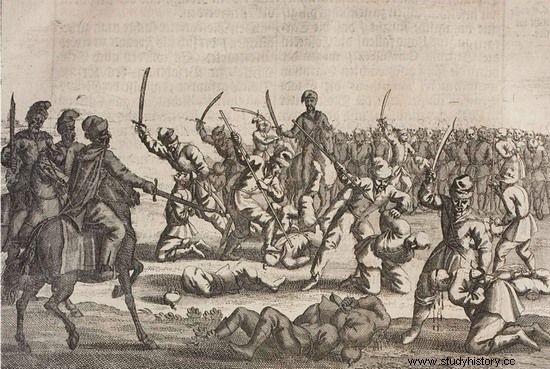
All the relatives of Bazyli Dunin-Borkowski died during the Chmielnicki Uprising.
According to these folk tales, Bazyli Dunin-Borkowski dabbled in alchemy, ate meat on Good Friday, signed a pact with the devil, did not even confess before his death, and after his death in 1702 ... he returned from the afterlife as a ghost attacking people. "He was buried in the Holy Trinity Council.
The next day, however, it was seen that he was riding six black horses on the Red Bridge:he had devils in the carriage for the coachman, the forys, the valet and three companions, 'wrote the ethnographer Mykola Markewycz. Is this scene not like the appearance of the devil's carriage in Transylvania in the pages of Stoker's Dracula?
In addition, as successive versions of the legend about Bazyli said, after his death in Chernihiv there were inexplicable deaths and disappearances. There were several dozen victims. The local Orthodox archbishop, Jan Maksymowicz, became interested in the matter. He had the reputation of a wise and holy man (it was no coincidence that he was canonized a hundred years ago). It was allegedly due to him that a properly equipped team of ghostbusters went to the monastery.
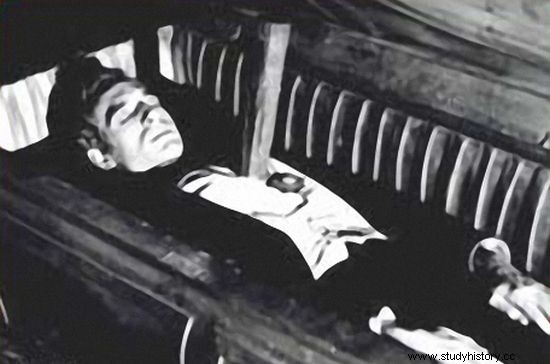
A stake in the heart. A reliable way to deal with vampires. Bazyli Dunin-Borkowski finished exactly the same.
And so Dunin ended up identically to the book vampire Dracula. "The coffin was opened immediately; the specter lay ruddy there, eyes open; it was pierced with an axial stake ” - wrote the ethnographer Markewycz. In a more developed version of this legend, the corpse was then taken from the temple and buried in a remote place by the river. This one soon poured out and took the wraith's grave…
Almost 200 years passed from the death of Dunin-Borkowski to the publication of "Dracula". Could the Chernihiv legend become one of Stoker's inspirations? It is possible if Vámbéry was his informant. And certainly this legend proves that our region of Europe was a superpower in creating vampires.
I first heard about the "vampire" Bazyli while working in "Focus Historia", during a conversation with a contemporary living relative of the Dunin family. I would like to thank her very much for the information.
